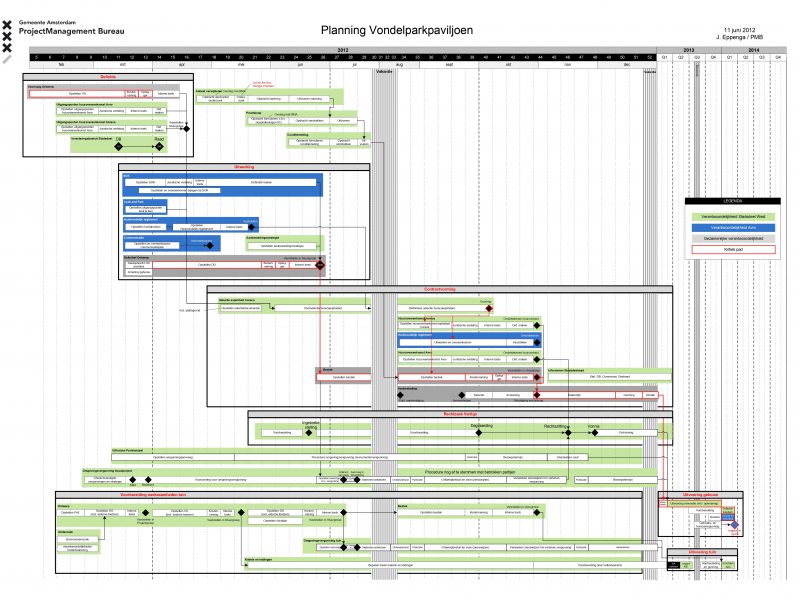In my earlier post on risk and uncertainty, I tried to make sense of the two notions. I stated that the two are confusing. Also in the way they are used in papers and our textbook. I also noticed this during the workshops with students.
I think the graphs and charts presented in the papers, only add to the confusion. Let me first define the notions in my own words. At least how I understand them. Scholars call something a risk if we know it and when we know the quantitative consequences. When we exactly know the costs (Known-Known) of an incident. An uncertainty is something we do not know (cognitive condition) everything about (known-unknowns, unknown-knowns, unk-unks). If I formulate it like this a risk does not feel like a risk because I know it. The uncertainty is the difficult thing.
The world of project development is all about uncertainty. I hardly see risks because the future is extremely uncertain, people can’t predict the future and therefore I am never sure the quantitative number I try to put on a risk is true in that future. For me, there are no risks in our profession, only uncertainties. And you can always act!
Two stupid graphs.

Winch uses the risk management cycle or process (Winch 2011 p. 360). I think it would be more logical to call it an uncertainty cycle. Especially because if you know the thing why check it afterwards? You only need to check if it is uncertain at the start. Maybe a nice chart but with a stupid name. The whole chapter thereafter is all about risks and hardly about uncertainties you need to fix.
O.k. I know I am nagging, complaining, and frustrated……
The aim of thinking about the future is to discover constraints and define a possible course of action, a way to act, and a way to deal with the beast. The aim is to take a problem away to smoothen the process. Recognising the beast is your first aim and looking it in the eyes the next.

There is another confusing graph: the probability-impact matrix. If there are no risks in life only uncertainties it is almost impossible to place incidents on a scale from low to high, not on the impact scale and not on the probability. I saw students struggling to fill in the chart with the problems they defined. The words used in the graph add to the confusion. What about the word EXTERNALISE? According to the graph, it is something with a high probability and low impact. You know it is going to happen! If your client nevertheless wants to have it, is it then logical to place it outside your project? At least this is how I understand the word. I don’t think the client would accept it.
Another example. If you are sure the soil under the building is polluted (probability is high) and you have sufficient money in the budget the impact will be low. It is stupid to try to externalize the beast. Also physically impossible.
Another example. Something with a high impact and a low probability could be solved by INSURANCE. I think that is true in case of a fire at the building site. Think about the Notre Dame in Paris. This does not mean you have nothing to do as a manager. You need to demand all-risk insurance in the building specifications, you need to ask the contractor for proof, you need to check if the insurance policy covers it all, and you need to control the contractor if they live up to the policy conditions on your building site. This is maybe a thing that needs control every month. Because if a fire breaks out your client is in deep shit.
I could go on and challenge all other notions used.
I assume the chart is the result of someone’s classification and it is in my opinion questionable. But I would like to stop complaining. Management is about dealing with all possible issues. Inside and outside the boundaries of your project and assignment if they influence. If something influences or could influence your thing then find ways to deal with it. Tame the beast, look it in the eyes, and cage it.
Last thing. Many student groups see the case and the assignments as a mountain of risks and define issues from a risk point of view, from a risk angle, a risk viewpoint. I would recommend to start looking at issues from the solution angle.
I wonder where this risky thinking comes from. I think from society. This neo-liberal society is all about risks, distributing risks, outsourcing risks, and pushing away problems. Nobody seems to be able to deal with uncertainties these days and the government, the boss, and the parents need to save us. This leads to disasters. Read the history of Grenfell Tower and you know what could happen if you ignore, externalize, cancel, or accept (words from the chart) uncertainties. Bad luck the fire broke out? accept this?…….Extremely devastating for others, many others. Read: A merry-go-round of buck-passing.
Thanks for reading. Have fun making your own posts






